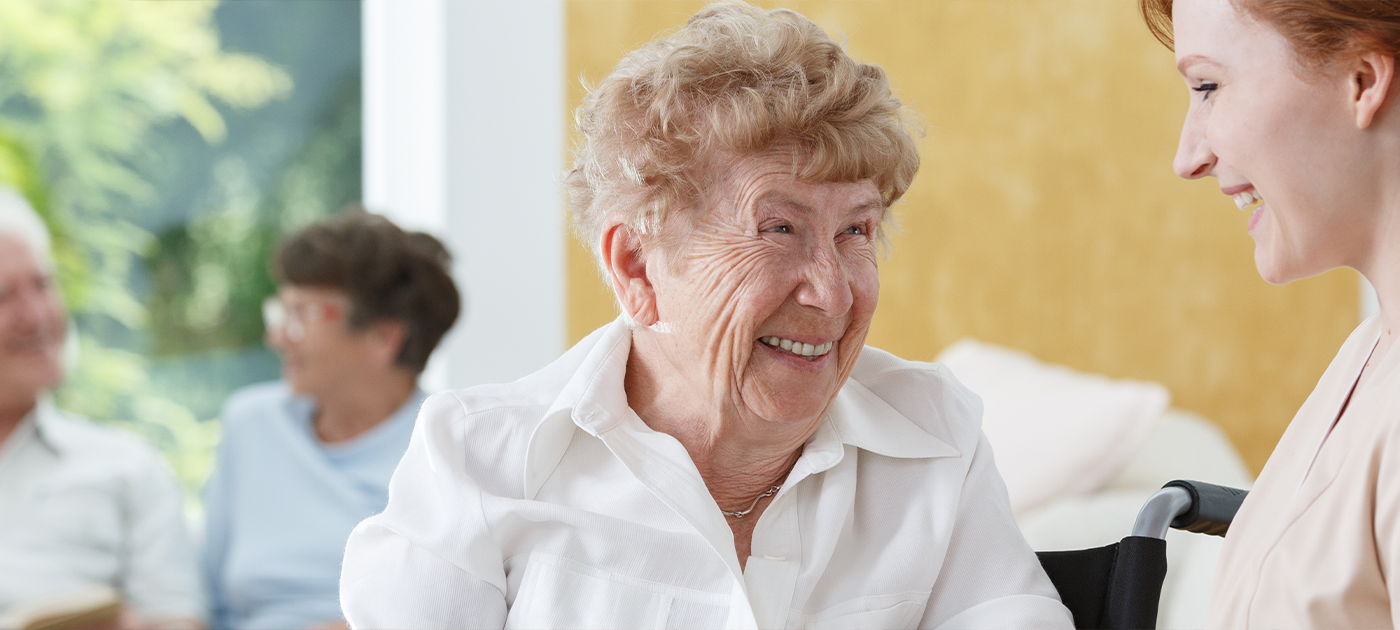Bringing Health and Confidence Back to Senior Care

COVID-19 brought a new awareness to the importance of reducing viral load in enclosed spaces, including an emphasis on IAQ (indoor air quality) and disinfection. As a population more susceptible to illness, concerns of inadequate senior care have potential residents and their families seeking other alternatives.
Despite these challenges, care facilities and assisted living communities still have so much to offer residents and their families, including physical and emotional support, that they wouldn’t be able to receive otherwise. Improving occupancy rates is a matter of confidence—and regaining it starts with a proven, measurable way to eliminate health and safety risks for a population that spends 90% of its time indoors.
The Situation: Why Occupancy Rates are Declining
Unfortunately, the adage “no press is bad press” is misleading. The countless stories of health and safety negligence by a small population of communities give senior care facilities a negative stigma. In fact, 21% of family caregivers prefer their older adult aging in place because of how frequently the media reports concerns over care, overall health, and protection from illness. But just how far does this misconception go? 57% of seniors and their families felt negatively about the health and safety of senior living residences due to the pandemic and its proliferation throughout nursing homes, citing air quality and exposure to viruses as one of the highest concerns of seniors and their families.
The Health and Business Benefits of Improving Indoor Air Quality
With already-compromised immune systems, seniors are more susceptible to airborne illness than other adult populations. With viruses, such as influenza and SARS-CoV-2, able to exist as airborne droplets for hours, poor air circulation and improper disinfection heavily increase the risk of exposure. On the contrary, enhancing IAQ can help communities eliminate 99.99% of certain harmful particles in minutes. Not only is this a huge improvement in airborne safety, but this sort of efficacy transcends decreasing exposure risk.
Regardless of age, poor indoor air quality is linked to declining social, emotional, and cognitive ability—all of which are challenges seniors face during natural degeneration. But for senior care communities, taking a proactive approach to air and surface disinfection not only improves resident wellbeing but also acts as a visible commitment to ensuring the vitality of all occupants.
Happy, healthy residents are likely to manage long-term illnesses more easily, engage more often with their community, and spend more time with friends and family. They are also more likely to recommend their community to others, share positive feedback with the family caregivers, and rate their community higher compared to other care facilities—all of which are good for increasing occupancy rates.
For care facilities, now is the time to reinstill this sense of confidence within your community—and it starts with improving indoor air quality.

HVAC Upgrades: Not the Best Option to Quickly Improve Air Quality
More often than not, massive HVAC upgrades are the first thing facilities teams think about when setting out to improve IAQ. While proper ventilation, air filtration, and system maintenance are key to indoor air quality, making expensive upgrades to these systems is not the best place to start, especially when systems like the Vive Far UV Light C can help you reach your goal of air and surface disinfection to eliminate airborne exposure risk with a simple installation.
Here’s why:
HVAC upgrades are expensive and time-consuming. With costs well into the thousands for a few hundred square feet, retrofitting ventilation systems leaves a considerable dent in facilities teams’ budgets. Moreover, these upgrades can only modestly improve air changes per hour, even if the system runs at or close to maximum capacity. Finally, keep in mind that running an HVAC or filtration system more frequently also leads to higher energy expenditure and cost.
Lastly, HVAC systems cannot guarantee disinfection efficacy because Levels of exposure risk can vary dramatically within a building. Central HVAC systems cannot target specific rooms or spaces and are unable to direct airflow to the rooms with the highest levels of exposure risk and disinfection needs. Additionally, HVAC systems were never designed to identify which rooms have the most risk at any time. Instead, they are driven by central settings for mechanical operation and in-room thermostats for temperature control—they cannot actively sense space occupancy, uncover where disinfection is needed most, and dynamically supply airflow for those locations.
Therefore, a building’s indoor exposure risk to viruses and bacteria can vary greatly and depends on factors such as room dimensions, space occupancy, and activities within the space.
With all of this in mind, it’s time to take a look at a new approach: intelligent, upper-room UVC disinfection.
Improving Community Health and Confidence with UVC Disinfection.
With the ability to neutralize 99.99% of certain harmful microorganisms in minutes, UVC disinfection is becoming the new standard for indoor air and surface disinfection. With a wavelength between 10 and 400 nanometers, UV light has three subtypes: UV-A, UV-B, and UV-C. The latter, which we refer to as UVC, eliminates certain microorganisms that can spread, such as bacteria, viruses, mold, and mildew.
Recommended by some of the world’s leading health organizations, UVC is a safe, sustainable means of air and surface disinfection. In fact, Upper-Room UVC solutions such as R-Zero’s Beam are 15x more sustainable than upgrading your HVAC system and cost 8x less.* Additionally, HEPA filters are typically large, noisy, and disruptive in many spaces such as community offices and gathering spaces compared to R-Zero UVC products.
Best of all, the latest UVC innovations are digitally connected and customized to meet the unique needs of your space. Unlike HVAC solutions, smart UVC platforms provide insights into how often a space is disinfected, how the room is being used, and if air quality or compliance standards are being met—all from an easy-to-navigate dashboard. This provides always-on, always-connected visibility into your indoor spaces.
Knowing the quality of indoor air in your spaces is a giant leap forward in regaining control over indoor health and a visible, measurable commitment to empowering confidence in community spaces.
Reinforcing Peace of Mind
R-Zero has empowered thousands of customers across dozens of industries to ensure that their indoor spaces receive consistent, sustainable air and surface disinfection. As a perfect complement to HVAC ventilation in high-risk areas, adding R-Zero technology to your community is a demonstrative and highly-effective way to commit to inactivating airborne viruses and bacteria in the places where it’s needed most.
We’re here to get you started on your journey to healthier, safer indoor spaces. Learn more about R-Zero’s custom-fit UVC disinfection solutions by visiting us here.
* Based on modeling 9ACH for a 100,000 sq. ft. new building across US climate zones